Hagia Sophia was originally a church, converted to a mosque during the Islamic conquest, and now serves as a museum. Its heritage is well reflected inside, where you’ll find ceiling paintings of Jesus and Mary, along with Islamic elements hanging on the walls.

It’s not as well maintained as the Blue Mosque, but for a 1500 year old building, it’s pretty impressive.
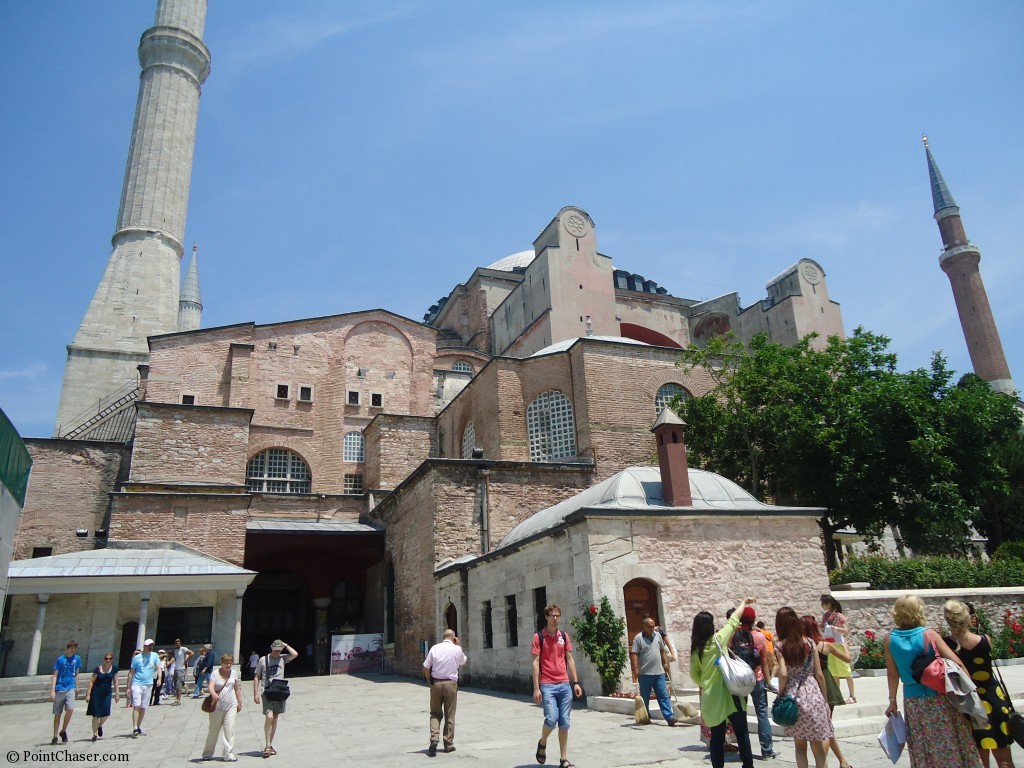
The building that stands today is actually the third one built on the premises. Both the first and second church burned down. Remnants of the second church have been dug up and can be viewed in the courtyard.
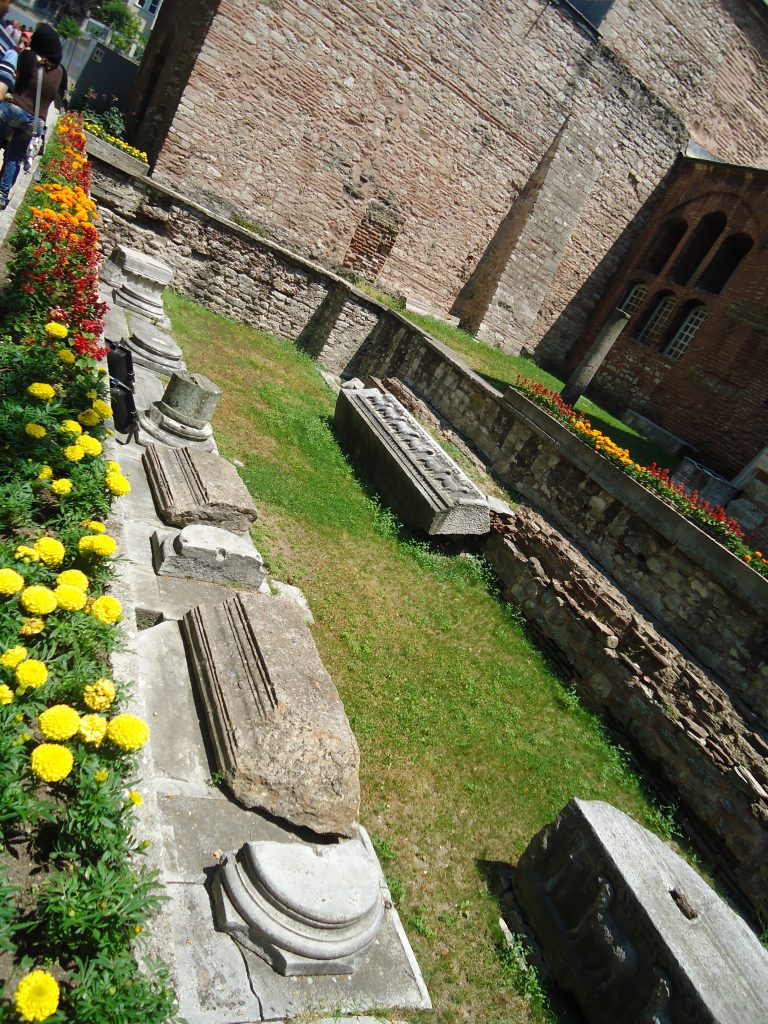
Additional marble blocks are strewn around the courtyard, with visitors using them as benches. While I love how history is so accessible in Istanbul, I don’t think this is a good example of it.
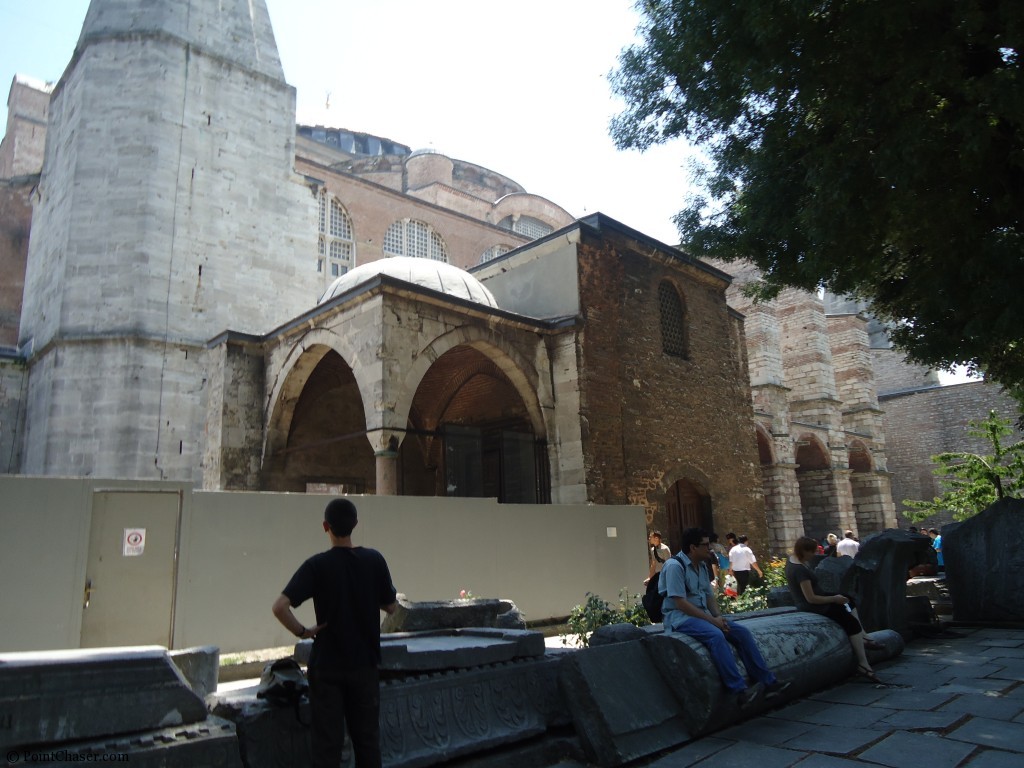
I recommend getting a tour guide for the Hagia Sophia. There are guides outside the long lines (which move very quickly, unless – according to several readers – a cruise ship is in town), who will give you a tour and move you to the front of the line if you buy one of their guidebooks. A guide is essential to understanding the many relics in the building. There aren’t a lot of signs or descriptions. It would be a shame to leave a historically rich place like this one without an understanding of its significance.
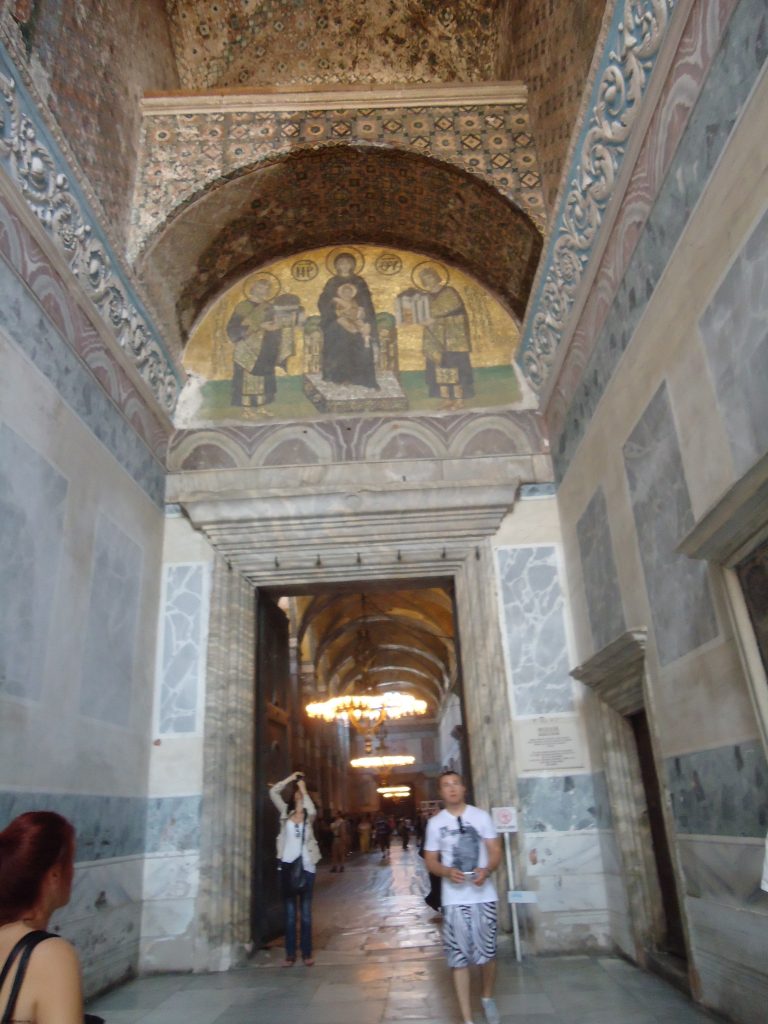
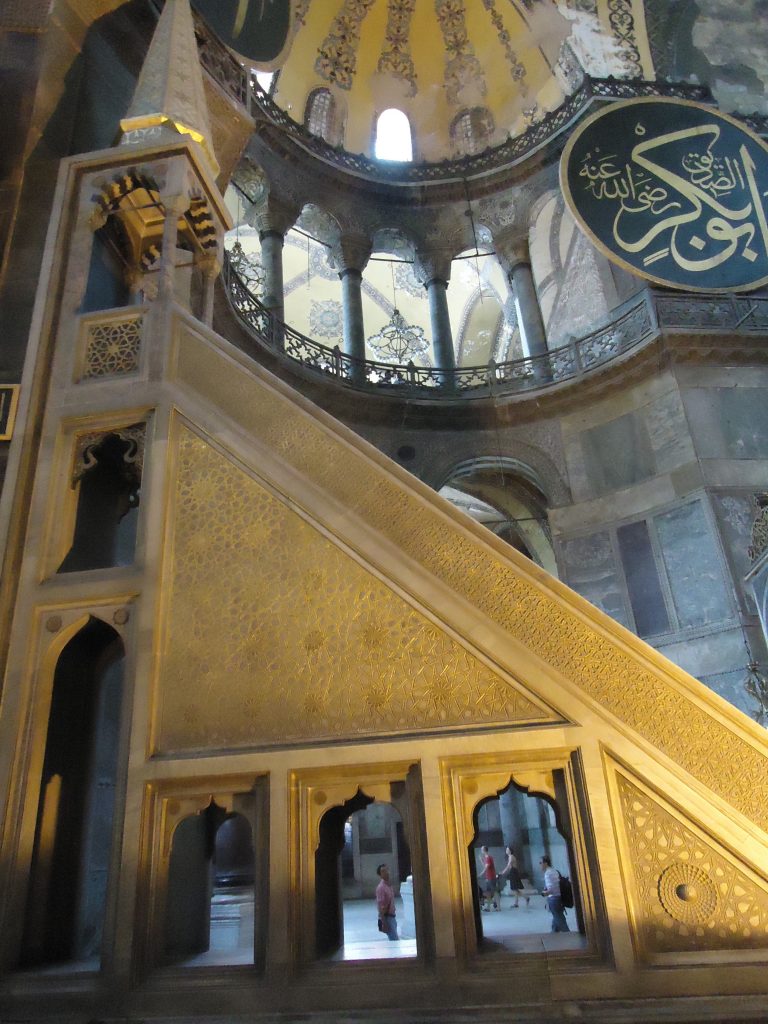
Once you enter the building, you will come across the Imperial Gate. During the Byzantine era, only the emperors were allowed to walk through these doors. Today, every Tom, Dick, and Harry who coughs up $15 can get through.
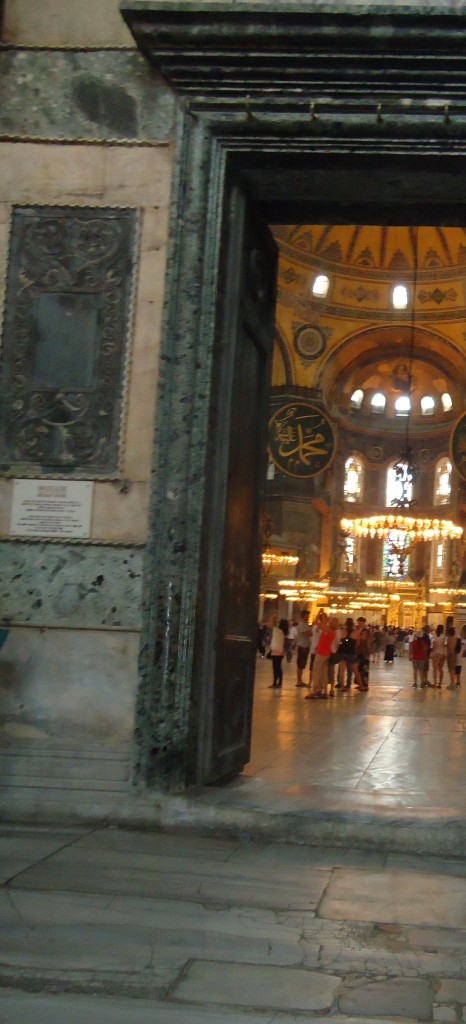
I was awed by the Splendid Door. It came from a second century BC temple in 829 and was still hinged to this particular entryway. This thing was almost 3,000 years old and it was still functioning in its original form…and people could touch it like it was some common door. There aren’t many exhibits that allow you to touch and interact with 3,000-year-old relics.

There was a long line by the sweating/crying/wishing column, with people waiting for their turn to stick their thumbs in the column. If you’re able to turn your thumb all the way around and it comes out wet, your wish will come true. Bring hand sanitizer and this practice will seem less gross.
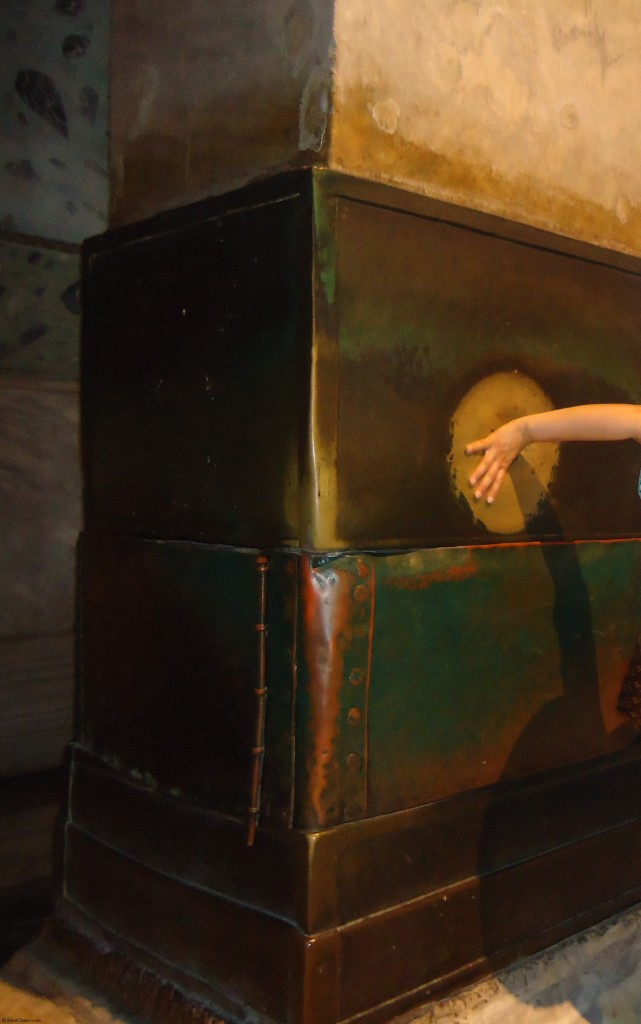
People refer to it as a crying column because from a distance, it looks like an eye and occasionally water comes out of it. Some believe it to be a manifestation of the Virgin Mary, with the water representing her tears. There is also a sign on the column, stating that the emperor Justinian entered the Church with a headache and was cured after resting his head against the column.
In case you’re wondering, I did stick my thumb in the column. Yes, I still have my thumb. No, my wish didn’t come true.
While the Sebil Fountain doesn’t look like much, I thought the sentiment behind it was sort of heartwarming: It was built “for the dispensing of free drinking water, distributed as an act of piety.” In today’s cynical world where the needy are almost punished for not being able to care for themselves, it’s nice to read something so profoundly humane from the old world.
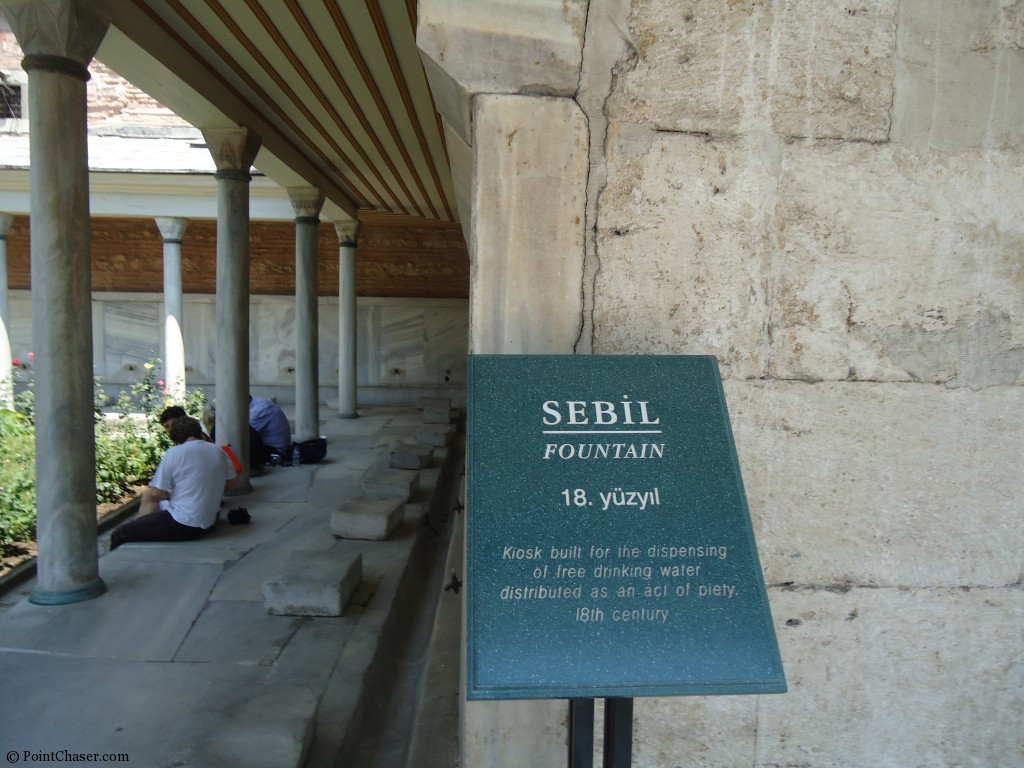
I loved taking the ramp to the upper gallery. It makes you feel like you’re going back in time, walking in the footsteps of the people who worshiped at and maintained this place 1,000 years ago.
Since its a relatively dark space, all of my pictures came out blurry and this is the closest thing I’ve got:
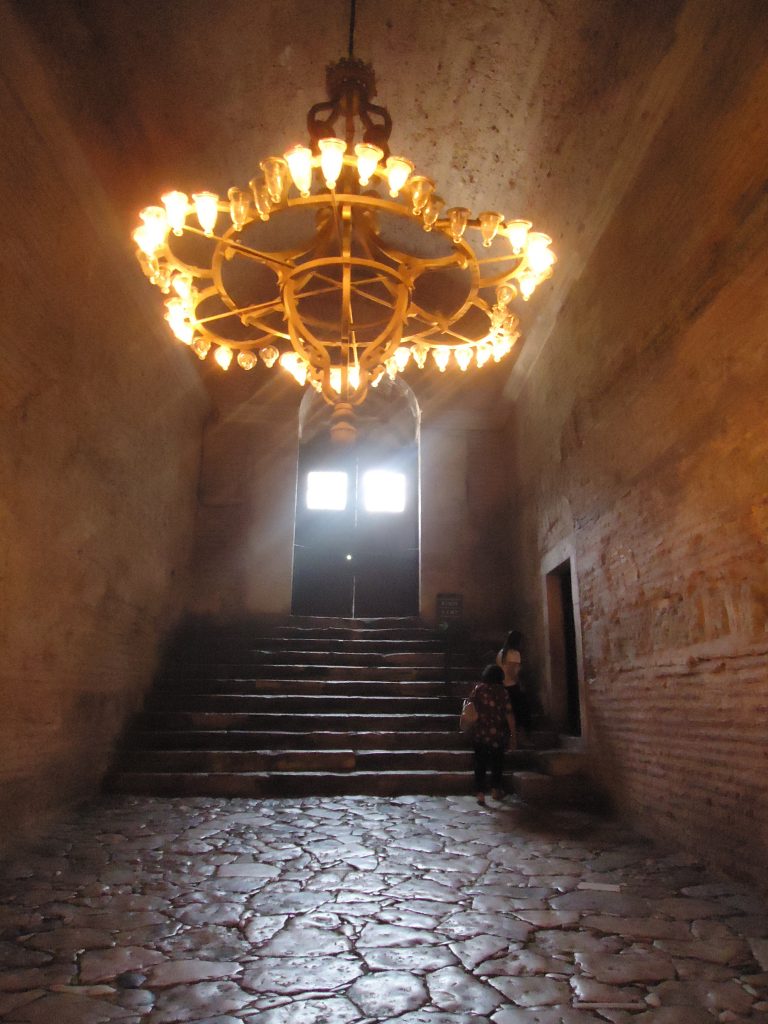
While it initially looks like an easier alternative to steps, they are equally exhausting. Once you’re on the second level, it feels like you worked out on a stairmaster. Your reward, however, is a nice view of the massive space and its artwork.
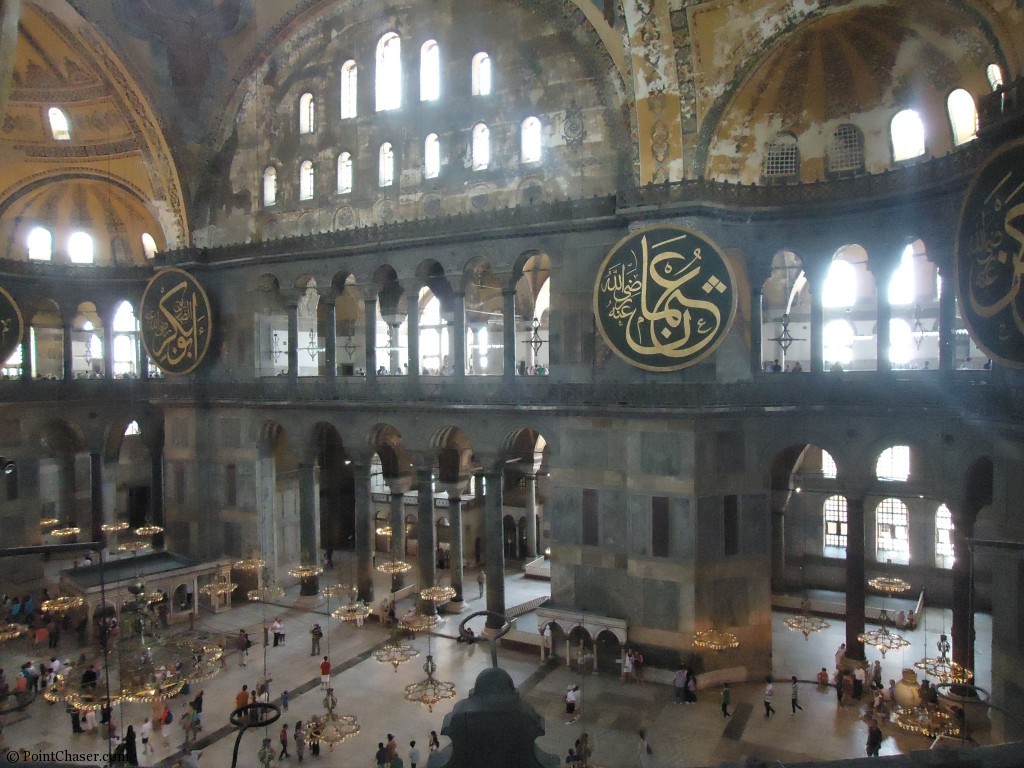
Being in the presence of a piece of history that is almost 1500 years old is truly humbling.
People let their ideological differences drive them apart, but here in this church/mosque/museum, people of all faiths congregate to admire a structure built to glorify what all of them find sacred.


I am really enjoying your posts on Istanbul as I am preparing for me trip in August with my family. Getting a guide is another issue I am working on as web sites are full of so many different sites/recommendations. So far I am relying on trip adviser which seems to be the most genuine place but any input or personal experience on that matter is welcome.
@ caveman, glad you’re enjoying these posts. I didn’t use a guide, so I can’t make recommendations, but aside from Tripadvisor you should check out FlyerTalk. When you google “Istanbul tour guides Flyertalk,” several pages come up with useful threads. Hope this helps!